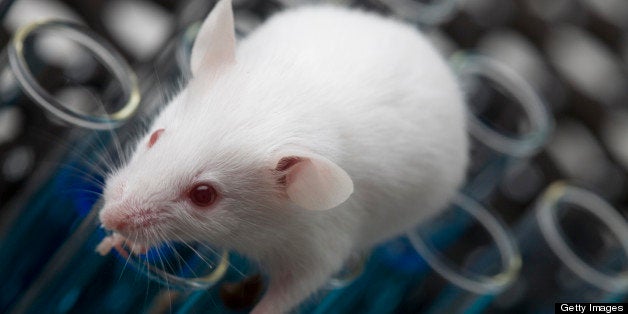
By Paul Gabrielsen
It's time to turn back the clock on an aging ticker. Drawing on an odd experimental technique invented more than a century ago but rarely done now, researchers have found that a blood-borne protein makes old mouse hearts appear young and healthy again. It's not clear yet whether humans would react the same way, but scientists are hopeful that this discovery may help treat one of the heart's most frustrating ailments.
"This is probably the first handle we have on what makes the heart young and what makes it old," says cardiologist Deepak Srivastava of the Gladstone Institute of Cardiovascular Disease in San Francisco, California, who was not involved in the work.
As heart muscles get older, they grow thicker. The thickened heart can still pump blood out normally, but it can't relax enough to refill between pumps. The condition is called diastolic heart failure, named after the heart's resting, or diastolic, phase. There is currently no treatment to reverse the thickening of the heart and restore normal function.
But researchers continue to look for such a cardiac fountain of youth. One approach has been to apply a 150-year-old technique to infuse young blood into old mice. Called heterochronic parabiosis the method involves surgically linking the circulatory systems of two mice of different ages by opening a flap of skin on each mouse's side and stitching the two together so that the same blood pumps through both creatures. (More than a century ago the technique was developed to study nutrient exchange between animals.) Previous studies found better muscle health and stronger healing in old mice receiving blood from a younger counterpart. But heart tissue is not known for being as resilient as skeletal muscles or skin. The effect can work both ways -- young mouse stem cells lose potency in old blood.
Stem cell biologist Amy Wagers and cardiologist Richard Lee, both of the Harvard Stem Cell Institute, wondered if any circulating factors, in young blood, such as hormones, might affect aging hearts. Wagers, Lee, and their colleagues used parabiosis to yoke together five 2-year-old mice (downright ancient in mouse years) with 2-month-old counterparts. The team also joined together 12 pairs of old mice and 10 pairs of young mice, as controls. The first result was "obviously positive," says Lee, who also practices at Brigham and Women's Hospital in Boston. After 4 weeks of connection to young mice, the five old mice's heart tissue had thinned and softened, looking just as spry and supple as the 2-month-olds'. The old mice now had young hearts, while the young mice's hearts stayed strong.
But the team spent years trying to figure out why; it was often the topic of Lee and Wagers' weekly bike rides. "There have been factors found that are suggested to be aging factors," Lee says, "but there has not been identification of a circulating factor that can go the other way, of turning the old tissue into younger tissue." The team began looking at factors in the blood, including 69 amino acids and more than a hundred lipids. With the help of SomaLogic, a protein-analysis company in Boulder, Colorado, the team made a breakthrough, narrowing down the likely suspects to only 13 factors.
One of the suspects, growth differentiation factor 11, or GDF-11, appeared to explain the miraculous heart rejuvenation. GDF-11, which regulates the growth of spinal and olfactory (smell) receptors, is produced abundantly in young mice, but production drops off with age. The team's further experiments on cultured heart cells confirmed that GDF-11 stops the thickening growth seen with age.
Additionally, the researchers report online today in Cell, old mice injected with this protein for 30 days developed younger, stronger heart tissue. GDF-11, they say, directly counteracts the genes responsible for muscle thickening.
"It's conceivable that this is just an interesting mouse story," Lee says, "but we're hoping to get data that might tell us that it pertains to humans." GDF-11 also appears in human blood, he says although its role in human heart aging is still unclear. Next, the team will investigate how GDF-11 affects other age-susceptible organs, such as spinal tissue.
Srivastava adds that GDF-11 appears to be effective only against heart disease due to age, but he hopes that the protein may someday help diseased hearts, stiffened by heart attacks, to relax.
This study is a modern validation of 18th-century parabiosis science using 21st century molecular biology, says cardiologist Gerald Dorn of Washington University in St. Louis. However, use of the technique lends the research a gothic, macabre flavor, he says. "I was looking to see whether Tim Burton or Vincent Price were a part of the experimental design."
